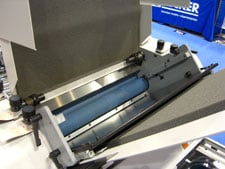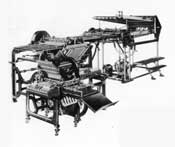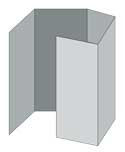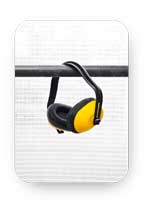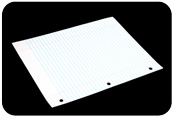Congratulations to Daryn Dyer of
JS McCarthy who placed the lucky order that won his employer a brand new creasing machine in our Speedcreaser Giveaway promotion.
Upon hearing the news that they had won, Frank Leary, a key manager and 26 year bindery veteran with the company, immediately began brainstorming how to use the new
Speedcreaser® inline with a plow folder and perhaps a Streamfeeder® to create a high-volume creasing and folding machine. Never ones to let any grass grow under their feet, by the afternoon they decided to upgrade from the manual feed to the
Auto-Feed Speedcreaser® with an extra
EZ Fit Tri-Creaser® plus a
Micro Perforator to round out this newest addition to their bindery arsenal.
Leary says they plan to install this latest piece of bindery equipment at the newly acquired Wolf Color Print in Newington CT, to help with creasing and perforating jobs in their growing digital print finishing operation.
In a recent article in the Kennebec Journal, Rick Tardiff, President of JS McCarthy, says they anticipate 30% growth for 2011. Their recent printing company acquisitions and the purchase of a new printing press are expected to fuel growth. JS McCarthy currently has a 92,000 square foot facility in Augusta ME employing about 135 people along with 30 employees in the Boston and Newington facilities.
And here's an interesting fact for an eco-sensitive world that I'll bet few printers can lay claim to: McCarthy is known for running its entire Augusta printing plant with 100%
wind-generated power.




